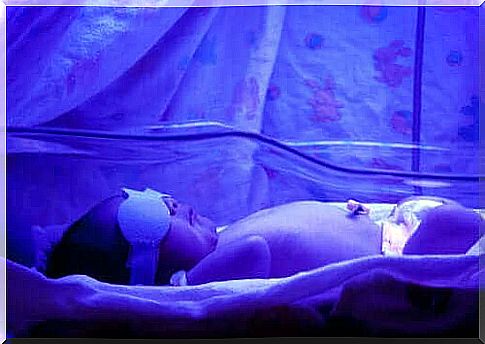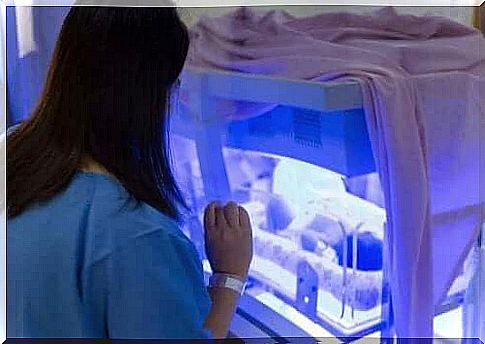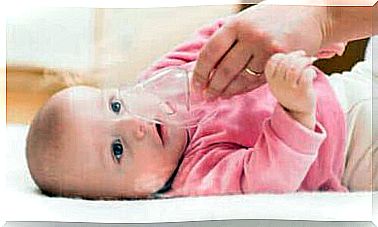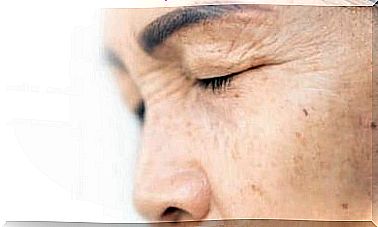Jaundice In Newborns: What You Need To Know

Parents’ fears and doubts about their newborns are so far-reaching that any rash or symptom can make them anxious. In the case of jaundice in newborns, it is important to know not to worry about it.
However, you must be careful that it does not progress into a more serious situation. In today’s article, you’ll find more information about jaundice in newborns and advice on how to act to prevent it from getting worse.
The Causes of Jaundice in Newborns
The definition of jaundice is ‘yellowing of the skin and mucous membranes’. Bilirubin, a substance that appears when the number of red blood cells decreases, is usually the cause. A blood test is the best way to find out the exact levels.
However, yellowing of the baby’s skin is not a serious condition if the bilirubin levels are not too high. If it does, then the baby has hyperbilirubinemia and needs to be hospitalized. This is for control and monitoring.
It is normal for a newborn’s skin to be a little yellow after two or three days after birth. This is because their liver needs to remove excess bilirubin. However, it takes some time to adjust after birth before it starts working as it should.
Therapy
Now that you know that jaundice in newborns is not a serious condition, you need to know how to deal with it. All you have to do is follow some basic procedures:
- Keep a close eye on your newborn’s feeding schedule. If you’re breastfeeding, making sure your baby is getting enough nutrition will be a little more difficult. Jaundice due to breastfeeding is rare, but when it does occur, it usually occurs a week after birth. Only a pediatrician can assess the newborn and tell whether the baby should stop breastfeeding for a day or two.
- Phototherapy at home. This is a technique used in neonatology departments for the treatment of hyperbilirubinemia. If the newborn does not require hospitalization, you can do this at home. All you need to do is expose the newborn to sunlight for 10 minutes a day. Make sure the baby is wearing a diaper and eye protection. The best time to do this is before 9am.

Identify potential risk situations
As we mentioned above, jaundice in newborns is quite common, so there is no cause for concern. However, you should be aware of certain signs that require medical evaluation.
For example, early onset of jaundice in newborns requires attention. If the color is present from the first day of life, the pediatrician will do a blood test to assess the condition.
The jaundice can last for the first two weeks of the newborn’s life. This is the time it takes for the liver to adjust before it starts to function as it should.
Complications of Jaundice in Newborns
When bilirubin levels go up, they invade brain cells. Thus they alter metabolism and neural function. Doctors call this kernicterus. To avoid this, you should consult your pediatrician so that they can look at your baby’s yellowing a week after birth.
The pediatrician will perform all necessary tests to assess bilirubin levels. So if the values are extreme, the child will have to be admitted for phototherapy.
Procedure of phototherapy in hospital

A newborn who needs phototherapy needs to be hospitalized for several days. Most hospitals now allow parents to be with their baby 24 hours a day. However, it is also important to take a few breaks to rest at home.
Nurses in neonatology departments can provide basic care to newborns with hyperbilirubinemia. You should follow the recommendations of specialized personnel. Do not just stop breastfeeding the baby, follow the directions of hospital staff.
Conclusion
The skin changes due to jaundice in newborns during the first days of the baby’s life are normal. However, it’s important to keep an eye on it and see your doctor if you notice any changes or if the yellowish color doesn’t go away.









